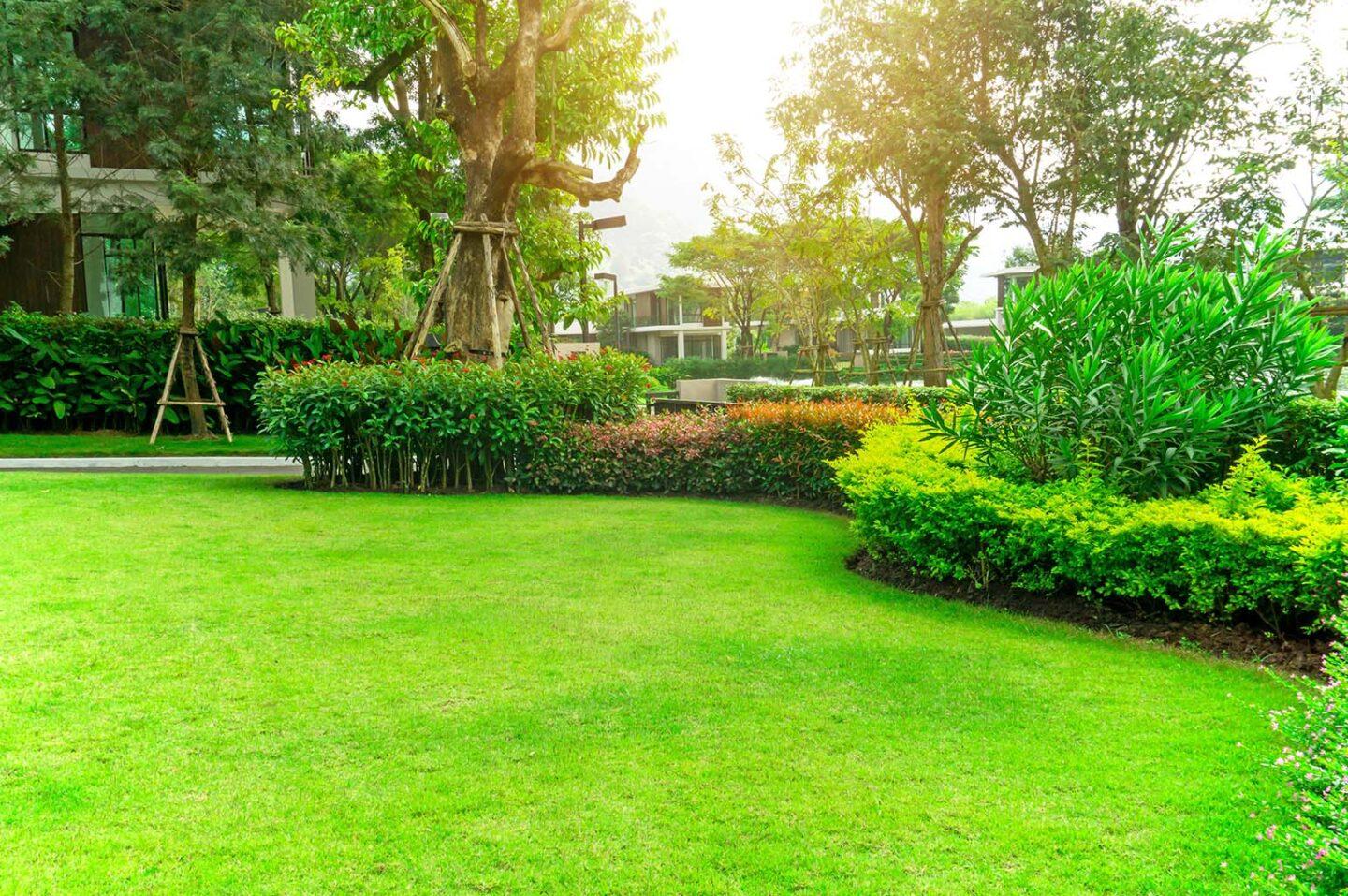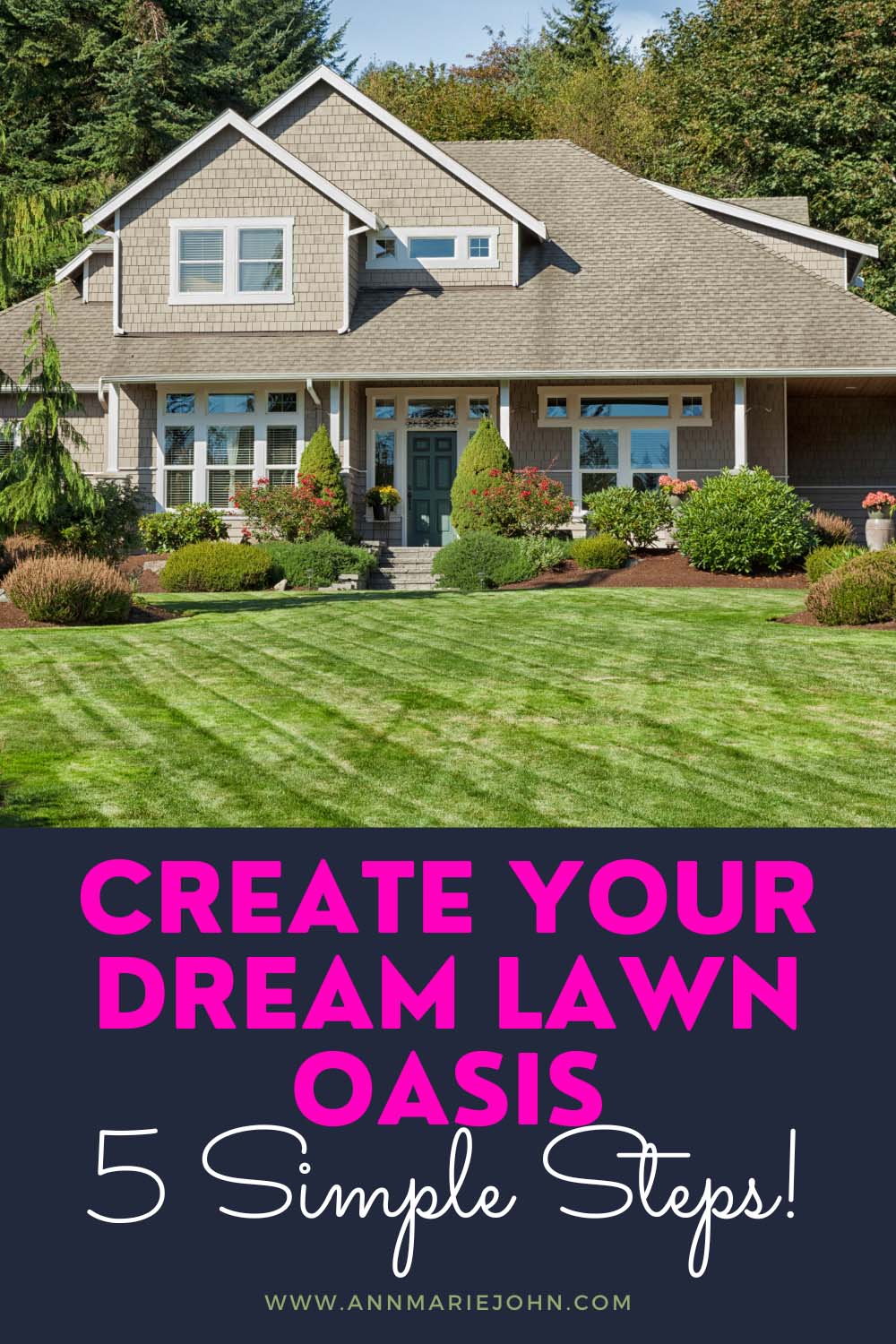Create your own backyard escape with these five simple steps! Learn how to turn your dull lawn into a lush, green paradise.

Your yard should be a retreat for you and your family—an extension of your home. Somewhere you can relax or get together—somewhere that brings you joy and peace. If your lawn is looking dull and boring, then you need this article. With a bit of planning, effort, and information, you can transform your lackluster lawn into a stunning oasis that will leave your family in awe. Let’s take a look at the five simple steps you’ll need to follow for the yard of your dreams!

1: The Planning Stage
Before you get started on your yard’s makeover, you need to determine two things: what do you want from your yard, and how healthy is it currently? Take some time to walk around and check for any issues with your lawn. Are there areas where the grass is struggling? Do you have holes or bare batches? Is there anything in your current yard you want to keep and incorporate into the new look?
Once you have a clear picture of your lawn’s condition, it’s time to think about how you want to use the space. Are you looking for a relaxing meditation area or a lush garden? Perhaps a firepit or an outdoor kitchen to host guests? This will help you decide what sort of features you want to incorporate, from water features to flower beds to hardscaping. Take measurements, draw a rough sketch, and go from there.
2: Getting Ready
Before you start changing the landscaping or bringing in furniture, you need to start with a solid foundation—a yard that’s ready to be transformed. Start by removing debris like rocks, branches, and old mulch. Then, aerate your soil to give water and nutrients more room to reach roots and to avoid compaction while you work. You can use a garden fork, a mechanical aerator, or a lawn mower attachment.
Next, test your soil’s pH. This will help you determine the health of your lawn and whether you need to take any extra steps other than standard lawn care, such as seeding or sodding. You want to be sure your soil can host thriving plants, so aim for a pH between 6.0 and 7.0.
You will want to take any current furniture or features and set them out of the way while you tend to your soil, even if you plan on incorporating them into your landscape design. This ensures your entire lawn has a chance to be healthy, especially if those features end up in a new place.
3: Establish and Maintain Healthy Grass
If your lawn was perfectly healthy in your assessment, then you can skip to the next paragraph. If not, you’ll want to start with seed or sod. Seed is more cost-effective, but it requires more patience to establish a healthy lawn. Sod is quick and effective, but it can be hard on the budget. Whatever you choose, select a grass that is suitable for your region and climate. For seeding, you can lightly rake the soil for a smooth surface before you evenly spread the seeds. Keep the soil moist but not saturated. Sod is usually ready to go.
Yard maintenance includes proper lawn fertilization, hydration, and aeration. You also need to mow correctly. Be sure to change your mowing pattern with each cut, and don’t go too short. Short grass is vulnerable to burning, stress, and disease. The best height for your lawn will vary based on the type of grass you have and the season. You also shouldn’t mow when the grass is wet, both for the sake of your lawn and your mower.
4: Enhance with Plants and Features
Now that you have a healthy lawn for a foundation, you can dig into the fun part: landscaping and hardscaping. Choose native plants that are well-suited to your climate, considering their size, color, and needs. You can create flower beds along the edges or scattered throughout; another option is to incorporate decorative hangers and pots throughout your design.
If you have space, consider planting some trees. Trees can add visual interest as well as shade and shelter. They can increase the privacy of your yard and create a cooler microclimate. Be sure to select varieties that are native to your area and won’t outgrow the space you set aside for them.
Hardscaping refers to functional and decorative structures, which can include things like pavers, patios, decks, water features, furniture, and so on. You can set up benches in your garden, hang a patio swing, or set up a new outdoor kitchen. You could add a firepit or set aside a large area and invest in a pool. It all depends on how you want to use your space. Some homeowners like to include vegetable gardens and rain barrels, while others create meditative seating areas or firelit reading spaces. You can also add housing and feeders for local wildlife like birds, butterflies, bats, and others.
5: Remember to Maintain Your Oasis
Whether you do the work yourself or choose to hire a professional, you will need to ensure your oasis is appropriately maintained. The care your oasis requires will vary based on how you design your yard, but no paradise can survive untended.
Your plants and grass will need to be regularly watered, and your water features will need to be kept clean or occasionally refilled. You’ll want to keep weeds under control and pull in seat cushions during poor weather. Gardens will need pruning, and vegetables will need to be harvested at just the right time.
Regular maintenance will keep your oasis looking vibrant and healthy year-round, allowing you to fully enjoy the beauty and tranquility of your personal paradise.
